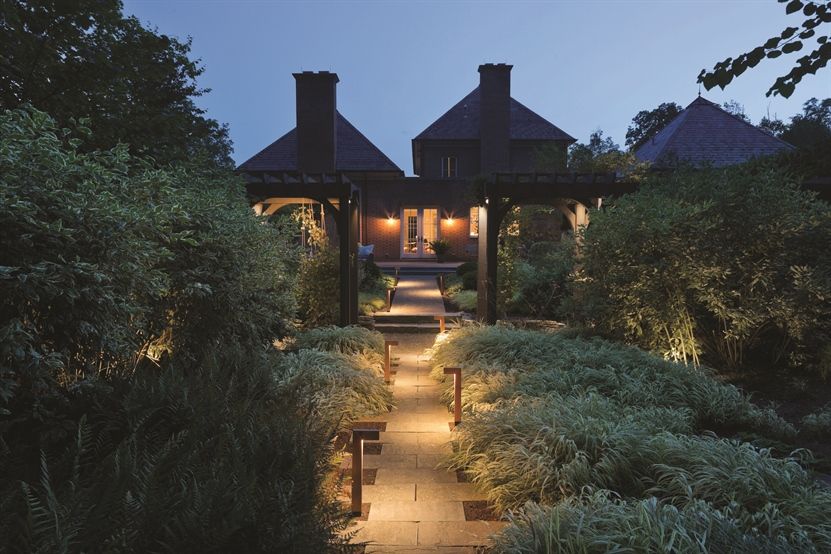Adding the perfect amount of exterior lighting will brighten up a dark landscape, giving a home after-dark curb appeal while also providing safety for visitors and family. And just like inside the home, exterior lighting should be designed using layers of light.
The first layer will be the ambient or general layer of light that provides overall illumination. This layer typically uses light sources that are positioned along pathways, as well as lighting that washes light up and down the walls of the home.
Stagger pathway lights about six to eight feet apart to offer just enough light to see while walking, and to avoid the “runway effect” that can occur when the lights are evenly distributed along the path. Illuminate stairways by installing stair step lights directly into stair risers for safety as well as to add a nice focal point to decks, patios and garden paths. Placing tape lighting underneath each stair step is another option to highlight stairways and increase safety.
To wash the house with light, use lighting installed in the soffits of the home’s exterior, or use a mix of down and up lights to spread the light across the entire surface for a balanced look.
Next, add entry lighting, which can be considered as task lighting for outdoors. Here are some basic guidelines for sizing and installing entrance lights:
For wall sconces placed on either side of the doorway, select fixtures that are proportioned one quarter or one third the height of the doorway. Place them at the height of 66 inches from the floor to the center of the fixture, and six to twelve inches from the door casing.
Fixtures placed over the doorway should be sized at one quarter or one third the width of the door frame, and centered six inches above the door.
Hanging lights, such as pendants and lanterns, should be sized at one fifth the height of the door and centered six inches above the door.
Finally, select accent lighting to add drama and provide the perfect curb appeal. Light trees with ground lights aimed up into the foliage, while making sure the trunk is also bathed in light. Or try moonlighting: place lights high in trees and use a cooler light bulb of about 5500 Kelvins to give the effect of real moonlight.
Create dramatic focal points by cross lighting statuary, fountains and architectural elements with two beams of light. In garden beds, place fixtures no closer than 20 feet apart to create pools of light that draw the eye from one area to the next. To highlight shadows and create interesting texture, position lights close to the base of garden walls. A good rule of thumb is to use warm (yellow/orange) light on objects and cool (white/blue) light on plants.
Always select outdoor lighting that is rated for damp locations (for semi-protected areas) or wet rated for places where the lighting receives direct exposure to the elements. Use weatherproof or outdoor-rated electrical boxes, which safely hold the electrical wire connections and prevent water from coming into contact with the wires.
For more exterior lighting tips and advice, visit an ALA-member showroom.
Photo by Hinkley Lighting

